St. Junípero and Franciscan Mexico
Above: Church of St. Michael the Archangel in Conca. The Franciscan presence in Mexico is enormous. Visit any city or town in the country and you are sure to see a Franciscan monastery; in many cases these are massive edifices […]
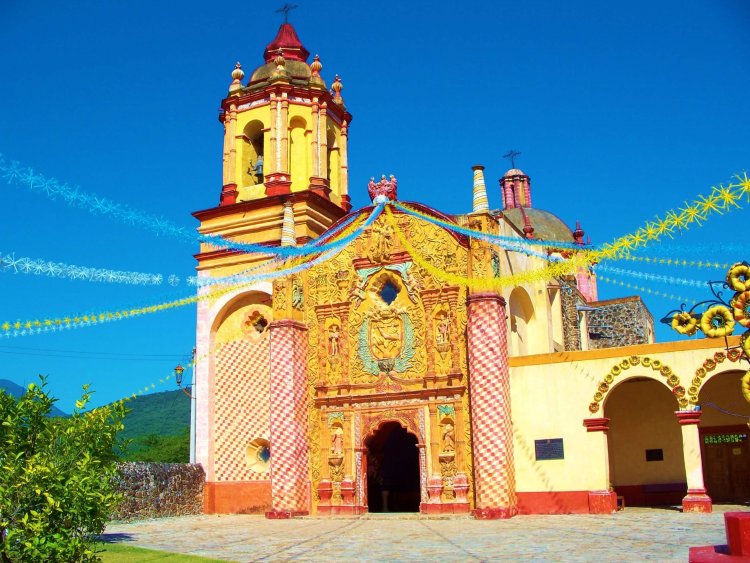
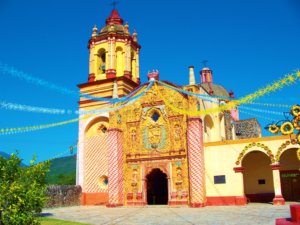
Above: Church of St. Michael the Archangel in Conca.
The Franciscan presence in Mexico is enormous. Visit any city or town in the country and you are sure to see a Franciscan monastery; in many cases these are massive edifices which are pretty hard to miss. The one in Izamal, Yucatan, for example, is so imposing that it dominates the entire town. Its atrium is reported to be the second largest in the world, second only to St. Peter’s in Rome.
These monasteries represent the first wave of the evangelization of Mexico which took place after the conquest of the Aztecs by Spanish conquistador Hernan Cortez in 1521. The first missionaries to arrive in the country were the Franciscans. In 1524 the legendary twelve friars arrived; they were popularly known as “The Twelve Apostles.” Their arrival marked the beginning of the Christianization of the once-pagan country.
The second wave began in the 18th century. The central figure in this wave is the Spanish friar, Junípero Serra. This will come as a surprise to many. You might well ask, “Isn’t Fr. Serra the Apostle of California?” That he is. But one little-known fact about Fr. Serra’s life is that he spent twenty years in Mexico before he arrived in California.
In any biography of Fr. Serra, the reader will come across references to the College of San Fernando in Mexico City. San Fernando was one of three Apostolic Colleges founded by the Franciscans in Mexico for the propagation of the faith in mission lands. They were essentially training centres for the formation of an elite corps of missionaries and were meant to restore the spiritual fervour of former times. They were built on the grand scale: the College of San Fernando, for example, housed 114 friars in 1772. It was the last of the three to be founded and was built in 1734. This college would become Fr. Serra’s main base while he was in Mexico.
Junípero was born in Majorca, Spain on Nov. 24, 1713. He entered the Franciscan Order at Palma, the island’s capital, in 1730, and took the name of Junípero (after one of St. Francis’ first companions). Seven years later he was ordained. During his novitiate he devoured books on the lives of the saints; this reading “inflamed his heart with love and zeal for souls.. Like another Ignatius of Loyola,” said his biographer, Fr. Francisco Palou.
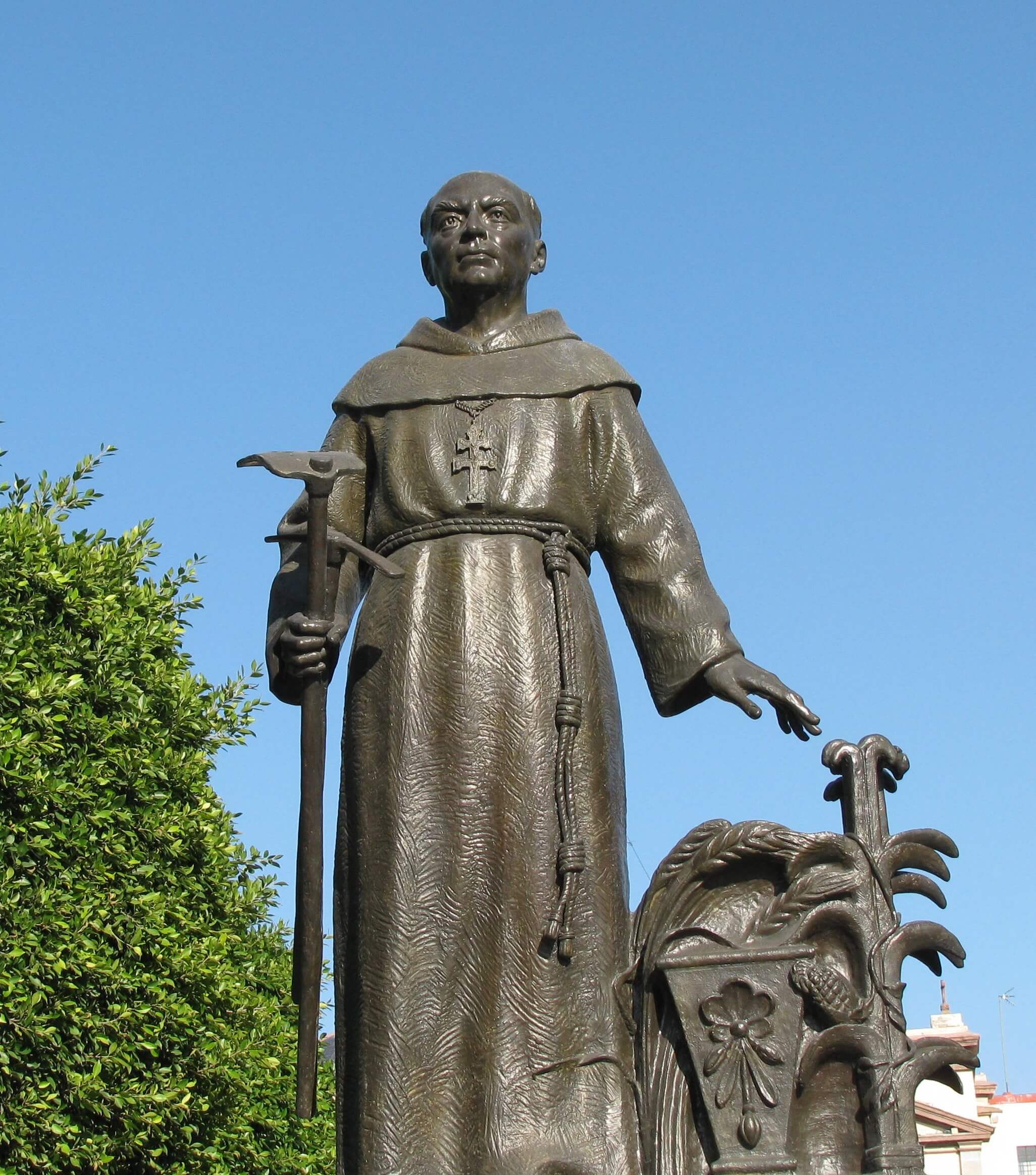
Statue of St. Junípero Serra, in front of the Apostolic College of Santa Cruz, in Queretaro
Serra was a brilliant student and became a professor of philosophy after completing his doctorate in Theology. According to his biographer he also excelled as “a sacred orator.” Numerous were the conversions of those who attended his Lenten sermons! Despite his exemplary success both as a professor and an orator he had only one ambition: to preach the gospel to the pagan nations and to bring them to the knowledge of Christ. Thus, when the missionary call came, he leapt at the opportunity. He was more than ready! His Father Guardian in Majorca, however, was not. When it came time for Fray Junípero’s departure, the Guardian “was weeping so that he could not speak a word.” Such was Junípero’s effect on those around him!
In 1749, Fr. Junípero, Fr. Juan Crespi and Fr. Francisco Palou (his former student and future biographer) set sail for Mexico. What a voyage it was! During the early stage of this 99-day Atlantic crossing, the captain of the ship, “a fanatical and narrow-minded heretic” was so filled with rage toward Junípero that he tried to kill him, holding a knife to his throat! He managed to escape but the trio kept careful watch for the duration of the trip. Privations of every kind abounded: starvation, hunger and horrible discomforts. His friend Palou said that “Fr. Junípero seemed unmoved and bore all these trials with great calmness.” On top of everything else a fierce storm engulfed the ship two days before their arrival in Mexico. Shipwreck was imminent. The storm raged so fiercely that all prepared for death. “To increase the danger, during that same stormy night, the sailors became mutinous,” said Palou. “Junípero, though surrounded by perils stood intrepid.”
Within two days, however, the storm abated and the ship landed on North American shores at the harbour of Vera Cruz, Mexico. It was December 7, the vigil of the Immaculate Conception. Junípero decided to walk to Mexico City in imitation of his founder, St. Francis. A distance of 275 miles over four mountain ranges. Walking would become his preferred mode of transportation in the new country. During this trek he sustained a wound in his leg from which he would never entirely recover.
On the last day of 1749, Fr. Junípero (who had a great devotion to Our Lady) arrived, exhausted, at the Basilica of Our Lady of Guadalupe. There he would spend the night in prayer “giving thanks to God and His Blessed Mother for having brought them to safety to their journey’s end.” On this night he would dedicate all of his future missionary endeavours to Our Lady of Guadalupe.
On New Year’s Day, 1750, the 36-year-old Junípero and his companion arrived at the College of San Fernando, the place which would be his home in Mexico for the next few months and for nine years (from 1758 to 1767). There he was greeted with open arms by one of the College’s founders: “Would to God they would send us a forest of such Junipers!” he exclaimed.
Fray Junípero would spend only five months training at the College instead of the requisite 12 months. He was needed immediately in the missions of the Sierra Gorda, a rugged, mountainous region north of Mexico City. He would spend the next eight years with the Pame Indians of the Sierra Gorda, a nomadic people who had resisted the evangelizing efforts of the Spanish missionaries for 200 years. All this would change with the arrival of Fray Junípero.
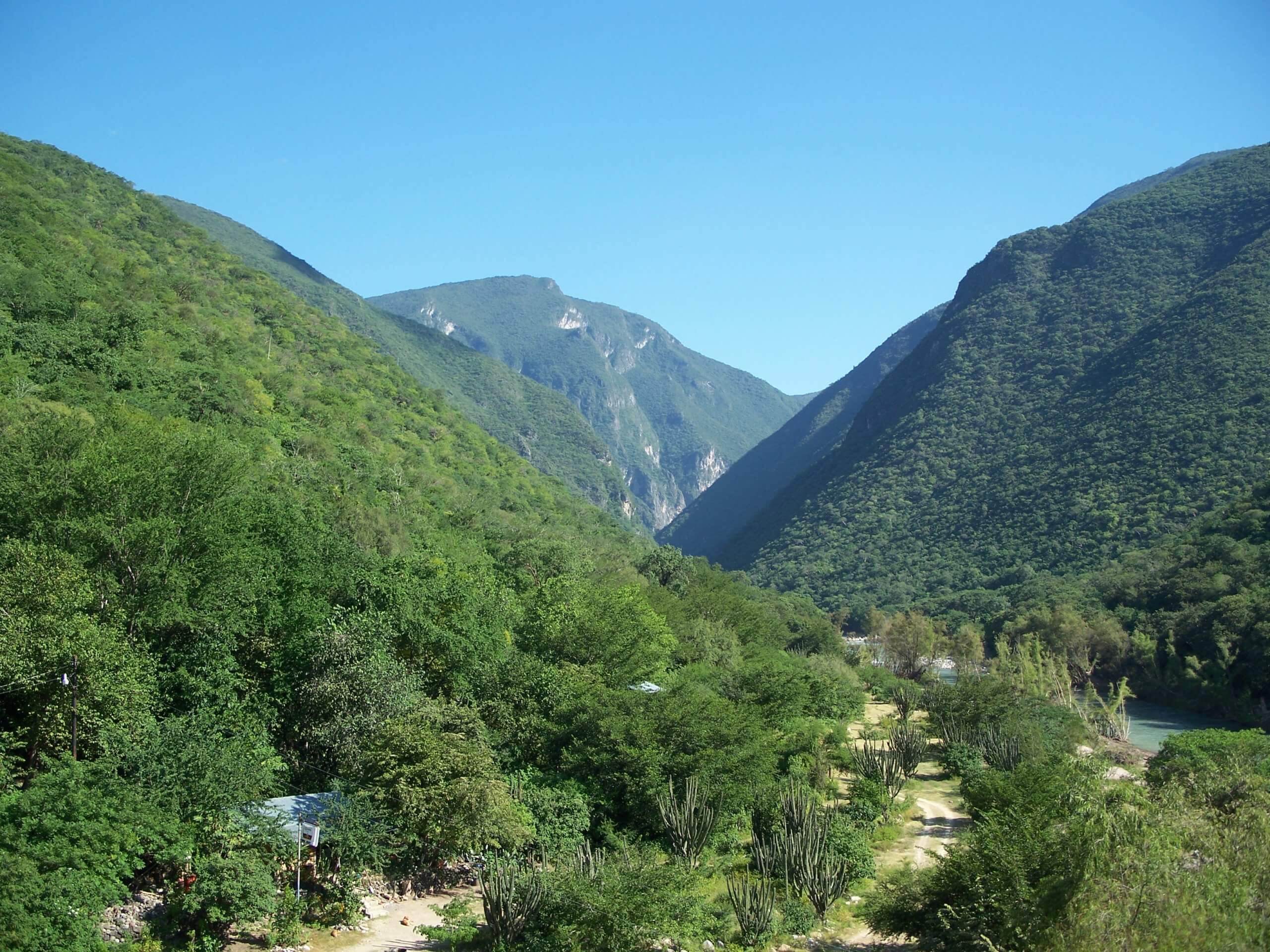
Mountains of the Sierra Gorda
Soon after his arrival he learned the Otomi language and began translating the catechism into the native language. With his flair for the dramatic the creative friar arranged colourful pageants. Pame children acted as angels in the Christmas plays. The tiniest Pame became the Christ child. And processions abounded! Every Saturday night there were candelight processions through the villages to honour the Blessed Virgin Mary. “He won the hearts of them all!” reported Palou.
He subsequently founded five “magnificent” mission churches which have been recently declared a World Heritage Site by UNESCO in 2003. The facades of these churches, known as “sermons in stucco and stone” are celebrated for their extraordinary carved facades which combine Christian symbolism with superb indigenous motifs and craftsmanship. Considered unique in the world, they are considered by many to be artistic masterpieces.
The friars worked alongside the Pames in the construction of these churches. One day Junípero’s spiritual Father from the College came to pay a visit. He was astonished to see the sight of Junípero lifting heavy beams with the construction crew. “Your former professor – doing construction work?” he asked Fray Palou. “Oh, yes! It happens all the time!” quipped Palou.
The five churches, all “baroque gems,” display standard Franciscan images such as the crossed arms of the crucified Christ and St. Francis bearing the stigmata. Each church has its own theme which is displayed on its façade: the sumptuous church at Tilaco, for example, is dedicated to St. Francis of Assisi. A statue of the hooded saint, surrounded by angels, is situated above the main entrance.
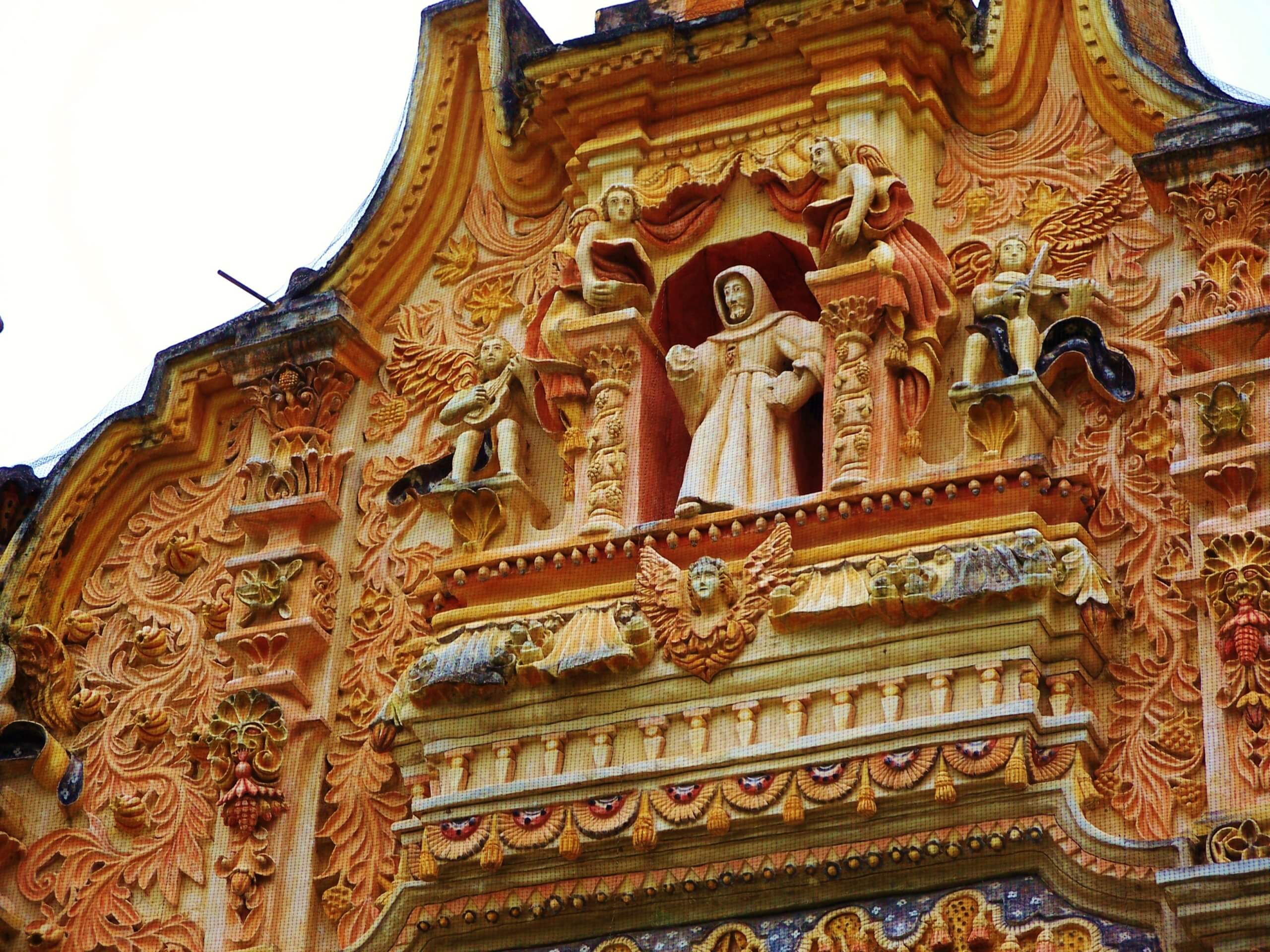
St. Francis church, mission at Tilaco
At Conca, the church built in honour of the Archangel St. Michael, we see the saint chastising a chained demon. The church of Our Lady of Light, built at Tancoyol, displays a charming statue of St. Anne and her small daughter, Mary, on its façade.
The mission church at Landa, dedicated to the Immaculate Conception, is the most ornate of the five churches. Here we see carvings of John Duns Scotus and the mystic nun, Blessed Mary Agreda, both at their writing desks. Both were staunch advocates of the doctrine of the Immaculate Conception.
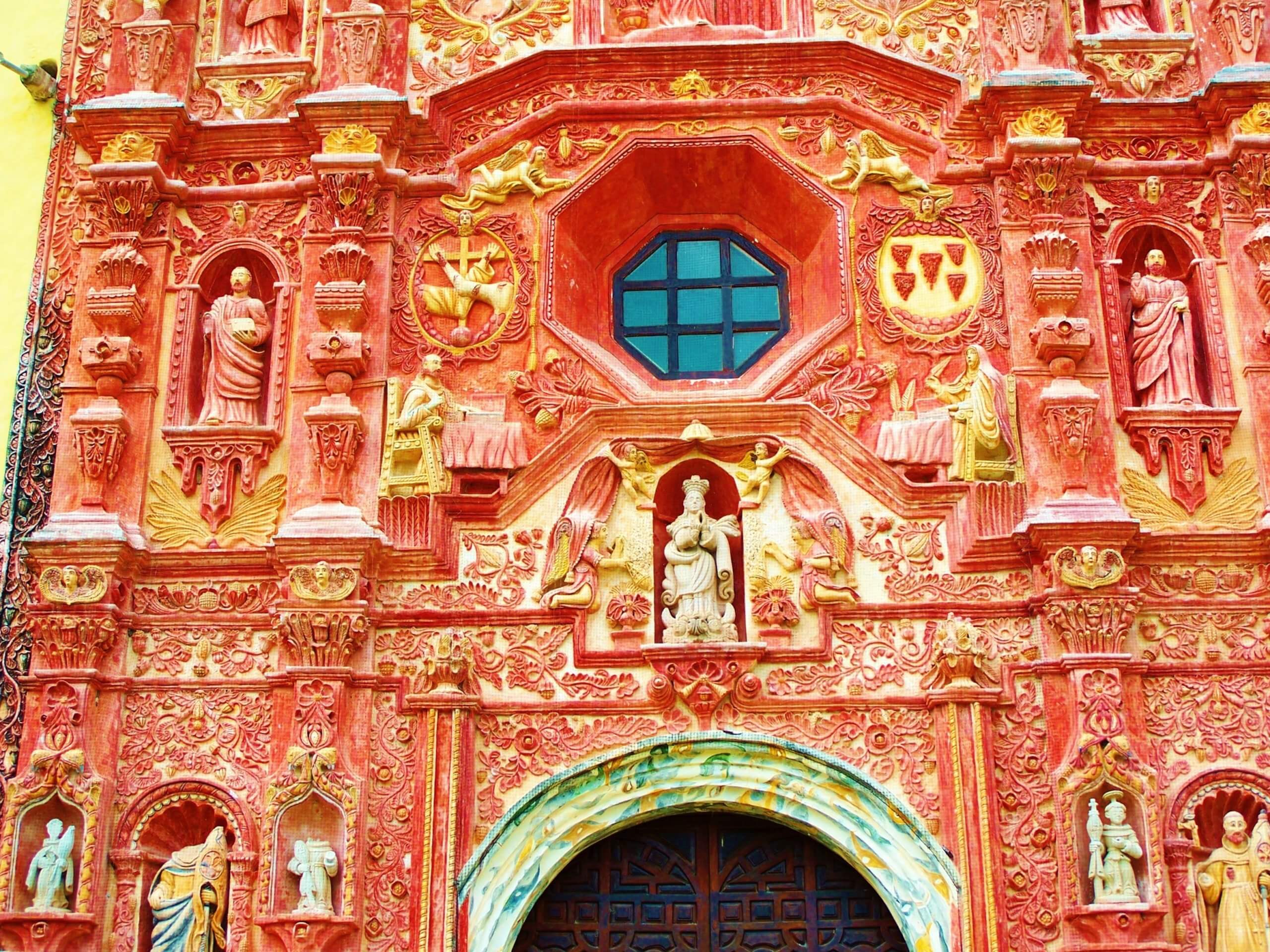
Church of the Immaculate Conception at Landa
The church at Jalpan, dedicated to St. James, is the largest of the five. It would be Junípero’s headquarters while he was in the Sierra Gorda.
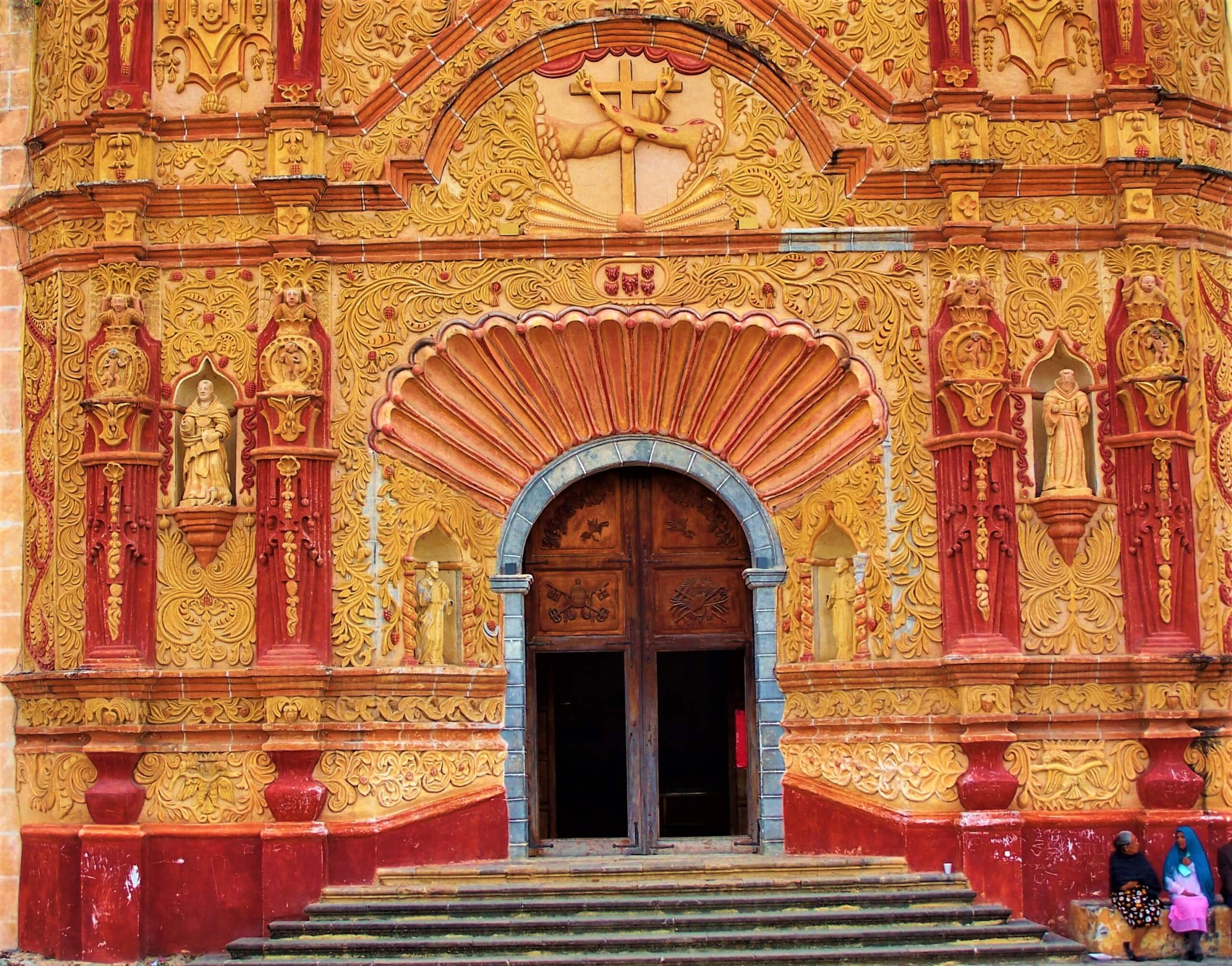
Church of San Diego at Jalpan
A plaque in the museum at Jalpan reveals his final words to the Pames at Sierra Gorda: “I leave you with nothing, but I leave you with a great treasure, the faith.” As biographer Abigail Fitch said, “His religion was the one great passion of his life! His religion was alive! It was a glowing spark burning in the depths of his soul.”
According to Fitch, “he was indefatigable in temporal affairs as well as spiritual matters. Under his administration the mission became not only self-supporting but extremely prosperous.” Fr. Palou concurs: “By the end of Fr. Serra’s tenure, the granaries were filled and the missions were in a most flourishing condition.”
In 1758 he was recalled to the College of San Fernando where he spent the next nine years in administrative works and giving missions throughout the country.
In 1769, the 56-year-old Junípero received his next assignment: he would be heading north. And the history of California would be changed forever.
Fr. Serra was canonized in 2015. He is celebrated on August 28 but on July 1st in the United States.
All photos taken by the author.













